Experimental Investigation of Mechanical Behaviors of Self-Compacting Concrete under Cyclic Direct Tension
Abstract
:1. Introduction
2. Materials and Methods
2.1. Materials
2.2. Specimens
2.3. Experimental Setup
3. Results and Discussion
3.1. Direct Tensile Strength
3.2. Stress-Strain Curve under Monotonic Direct Tension
3.3. Stress-Strain Curve under Cyclic Direct Tension
3.4. Energy Dissipation under Cyclic Direct Tension
3.5. Poisson’s Ratio under Monotonic Compression
3.6. Damage Model for Stress-Strain Curve
4. Conclusions
Author Contributions
Funding
Conflicts of Interest
References
- Shan, Z.; Yu, Z.W.; Shi, J.J. Experimental investigation of flow of fresh self-compacting concrete in improved L-box. Constr. Build. Mater. 2015, 84, 30–38. [Google Scholar] [CrossRef]
- Li, N.; Long, G.; Fu, Q.; Wang, X.; Ma, K.; Xie, Y. Effects of freeze and cyclic flexural load on mechanical evolution of filling layer self-compacting concrete. Constr. Build. Mater. 2019, 200, 198–208. [Google Scholar] [CrossRef]
- Brouwers, H.J.H.; Radix, H.J. Self-Compacting Concrete: Theoretical and experimental study. Cem. Concr. Res. 2005, 35, 2116–2136. [Google Scholar] [CrossRef]
- Almeida Filho, F.M.; Barragán, B.E.; Casas, J.R.; El Debs, A.L.H.C. Hardened properties of self-compacting concrete—A statistical approach. Constr. Build. Mater. 2010, 24, 1608–1615. [Google Scholar] [CrossRef]
- Domone, P.L. A review of the hardened mechanical properties of self-compacting concrete. Cem. Concr. Compos. 2007, 29, 1–12. [Google Scholar] [CrossRef]
- Persson, B. A comparison between mechanical properties of self-compacting concrete and the corresponding properties of normal concrete. Cem. Concr. Res. 2001, 31, 193–198. [Google Scholar] [CrossRef]
- Aslani, F.; Nejadi, S. Mechanical properties of conventional and self-compacting concrete: An analytical study. Constr. Build. Mater. 2012, 36, 330–347. [Google Scholar] [CrossRef]
- Korte, S.; Boel, V.; De Corte, W.; De Schutter, G. Static and fatigue fracture mechanics properties of self-compacting concrete using three-point bending tests and wedge-splitting tests. Constr. Build. Mater. 2014, 57, 1–8. [Google Scholar] [CrossRef]
- Fathi, H.; Farhang, K. Effect of cyclic loadings on heated self-compacting concrete. Constr. Build. Mater. 2014, 69, 26–31. [Google Scholar] [CrossRef]
- Fathi, H.; Dabbagh, H. Damage mechanism of SCC under cyclic loading with different speed. Constr. Build. Mater. 2015, 101, 252–259. [Google Scholar] [CrossRef]
- Barnat-Hunek, D.; Góra, J.; Andrzejuk, W.; Łagód, G. The microstructure-mechanical properties of hybrid fibres-reinforced self-compacting lightweight concrete with perlite aggregate. Materials 2018, 11, 1093. [Google Scholar] [CrossRef]
- Bušić, R.; Miličević, I.; Kalman Šipoš, T.; Strukar, K. Recycled rubber as an aggregate replacement in self-compacting concrete—Literature overview. Materials 2018, 11, 1729. [Google Scholar] [CrossRef] [PubMed]
- Ling, G.; Shui, Z.; Sun, T.; Gao, X.; Wang, Y.; Sun, Y.; Wang, G.; Li, Z. Rheological behavior and microstructure characteristics of SCC incorporating metakaolin and silica fume. Materials 2018, 11, 2576. [Google Scholar] [CrossRef] [PubMed]
- Technical Specification for Application of Self-Compacting Concrete; PJGJ/T283-2012; Architecture & Building Press: Beijing, China, 2012. (In Chinese)
- Standard for Test Method of Concrete Structures; GB50152-2012; Architecture & Building Press: Beijing, China, 2012. (In Chinese)
- Sinha, B.P.; Gerstle, K.H.; Tulin, L.G. Stress-strain relations for concrete under cyclic loading. ACI Struct. J. 1964, 61, 195–211. [Google Scholar]
- Contrafatto, L.; Cuomo, M. A framework of elastic–plastic damaging model for concrete under multiaxial stress states. Inter. J. Plast. 2006, 22, 2272–2300. [Google Scholar] [CrossRef]
- Giorgio, I.; Scerrato, D. Multi-scale concrete model with rate-dependent internal friction. Eur. J. Environ. Civ. Eng. 2017, 21, 821–839. [Google Scholar] [CrossRef]
- Karsan, I.D.; Jirsa, J.O. Behavior of concrete under compressive loadings. ASCE J. Struct. Eng. 1969, 95, 2535–2563. [Google Scholar]
- Gopalaratnam, V.S.; Shah, S.P. Softening response of plain concrete in direct tension. ACI Mater. J. 1985, 3, 310–323. [Google Scholar]
- Shan, Z.; Yu, Z. A fiber bundle-plastic chain model for quasi-brittle materials under uniaxial loading. J. Stat. Mech. Theory Exp. 2015, 11, P11010. [Google Scholar] [CrossRef]
- Yu, Z.; Shan, Z.; Mao, J. Fatigue deterioration of quasi-brittle materials. Inter. J. Fatigue 2019, 118, 185–191. [Google Scholar] [CrossRef]
- Placidi, L.; Barchiesi, E.; Misra, A. A strain gradient variational approach to damage: A comparison with damage gradient models and numerical results. Math. Mech. Complex Syst. 2018, 6, 77–100. [Google Scholar] [CrossRef]
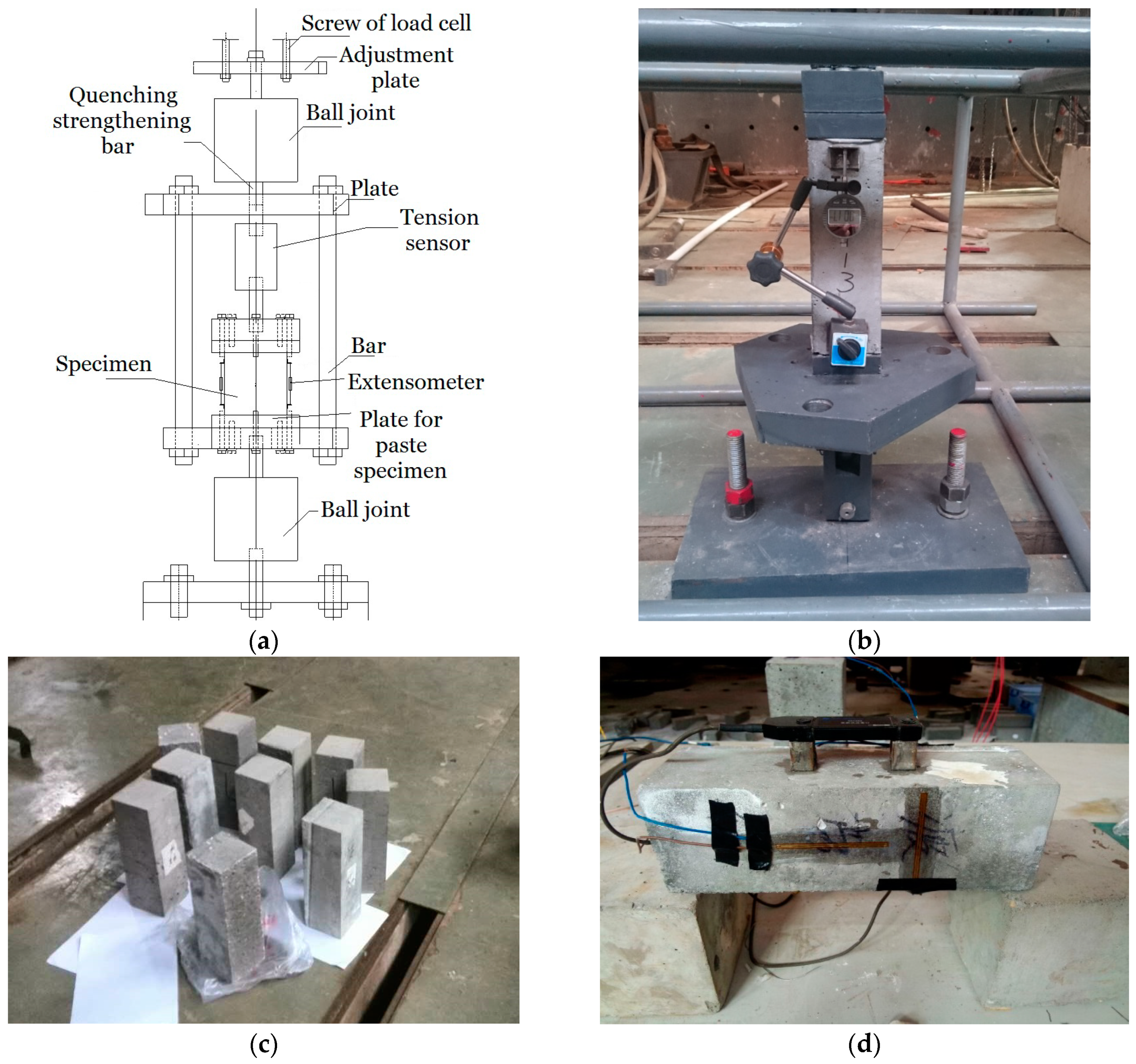


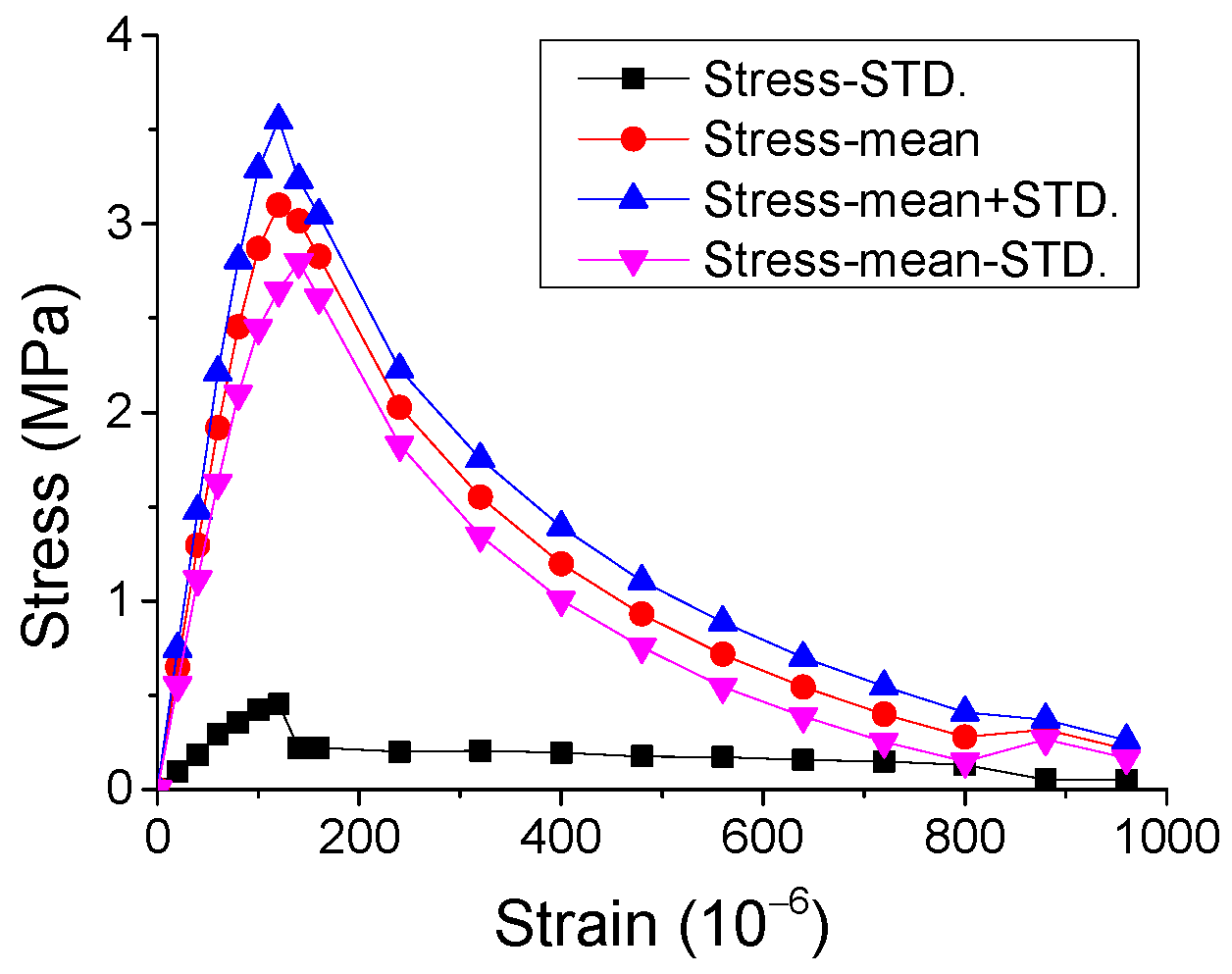
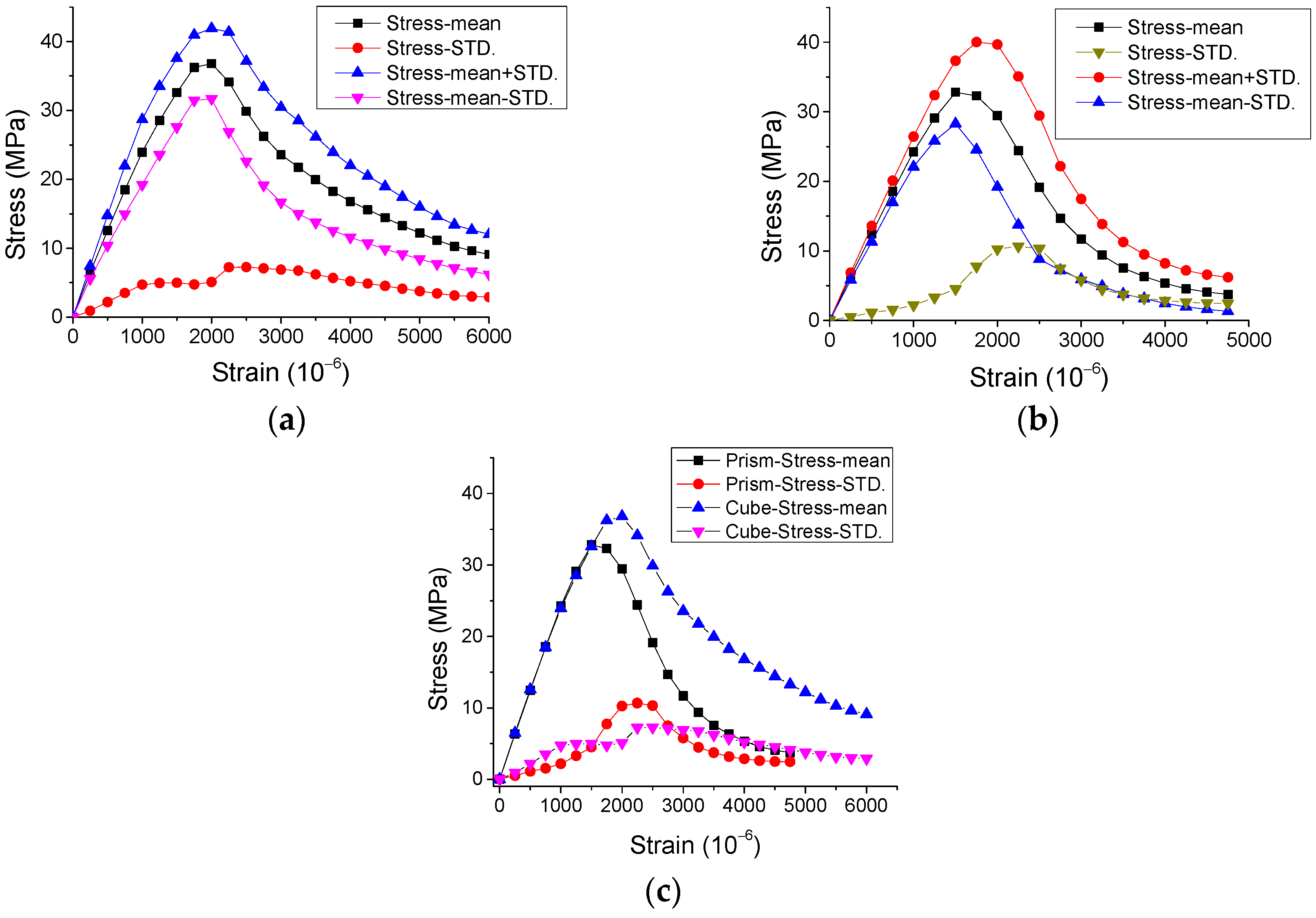
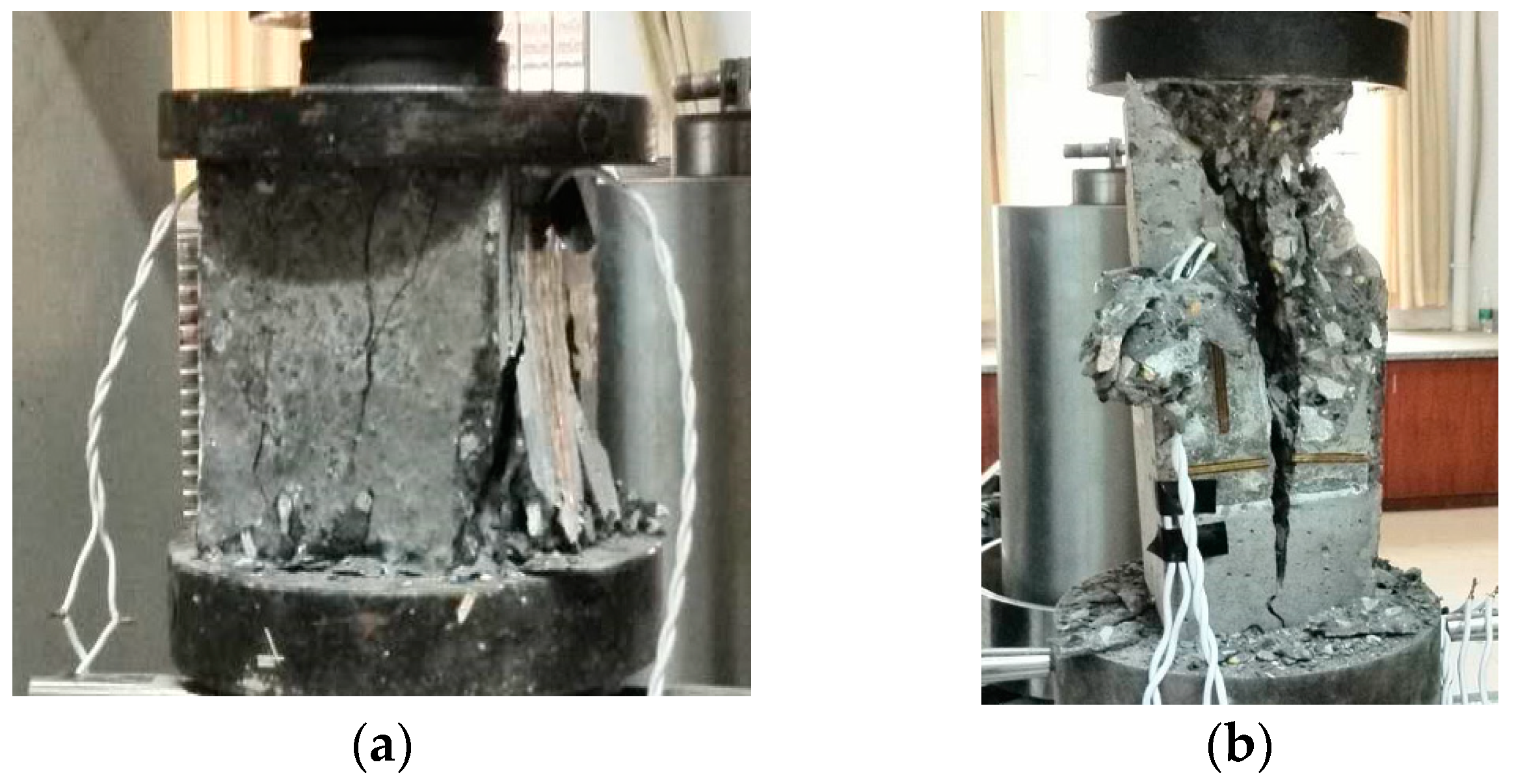
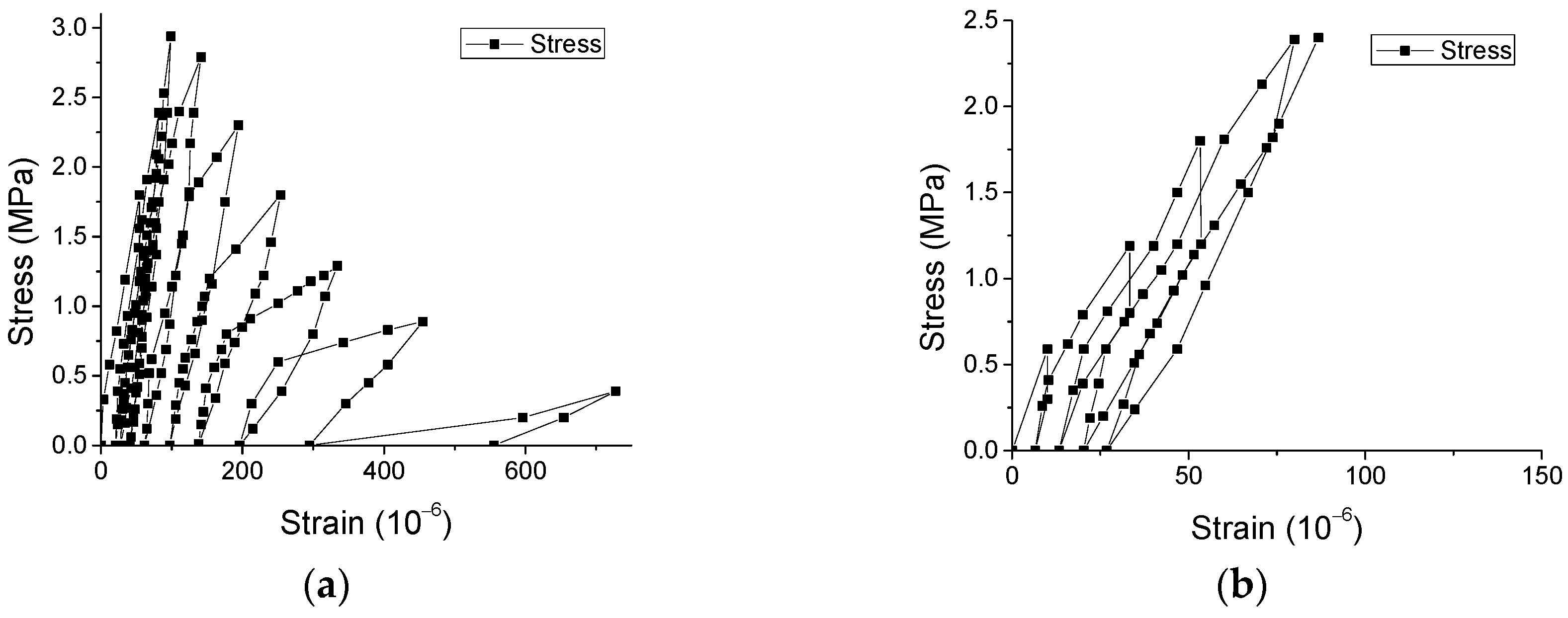



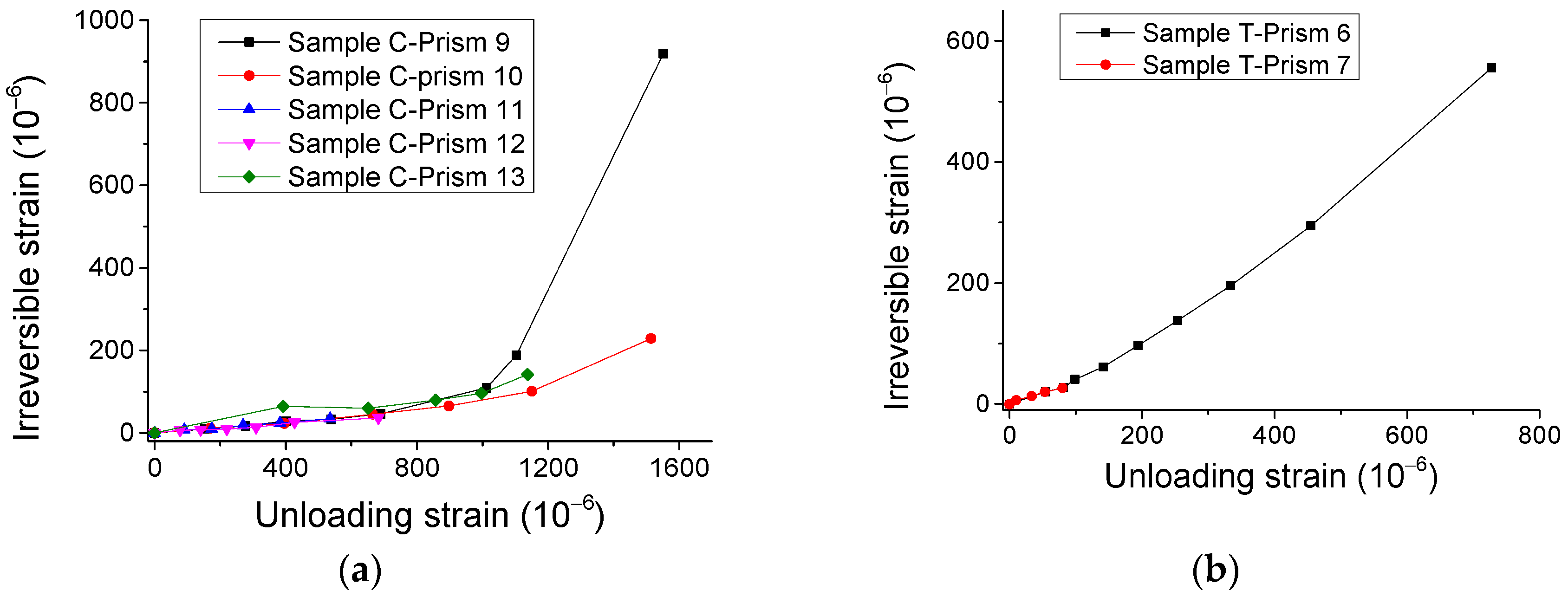
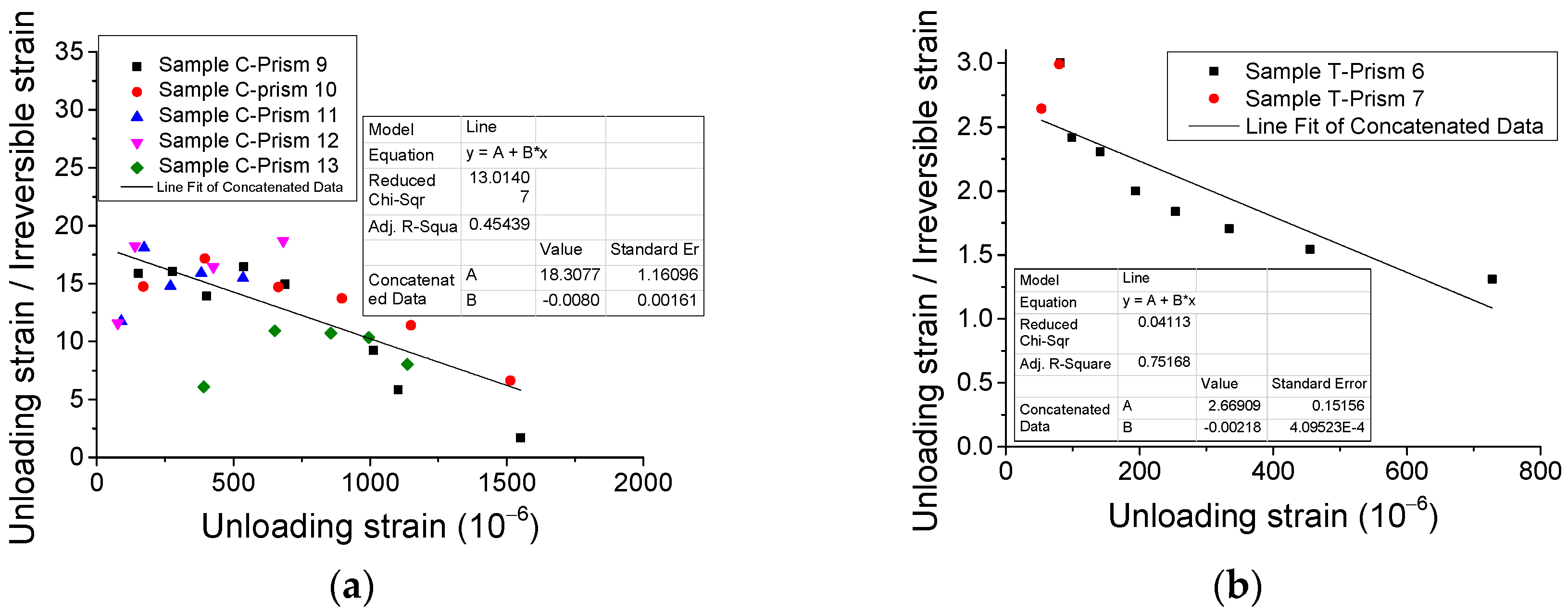
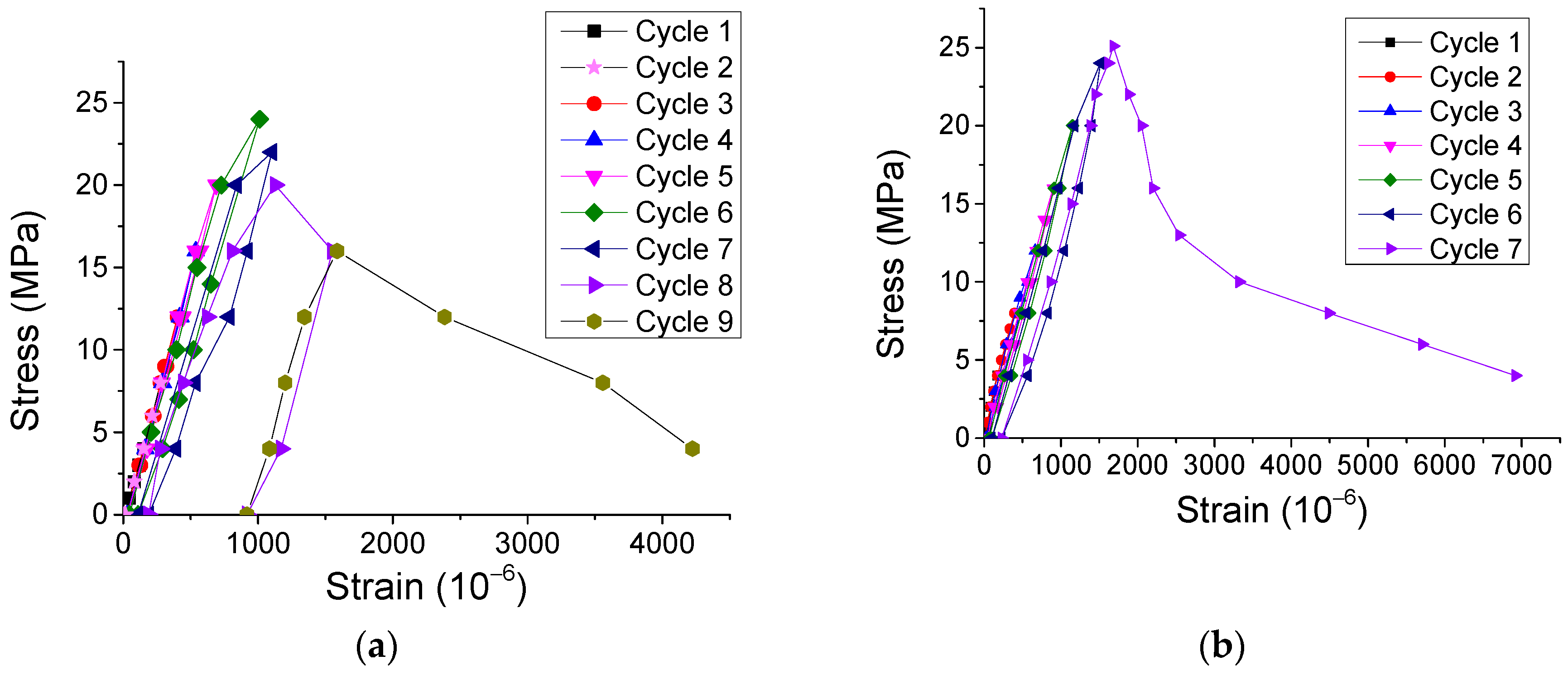
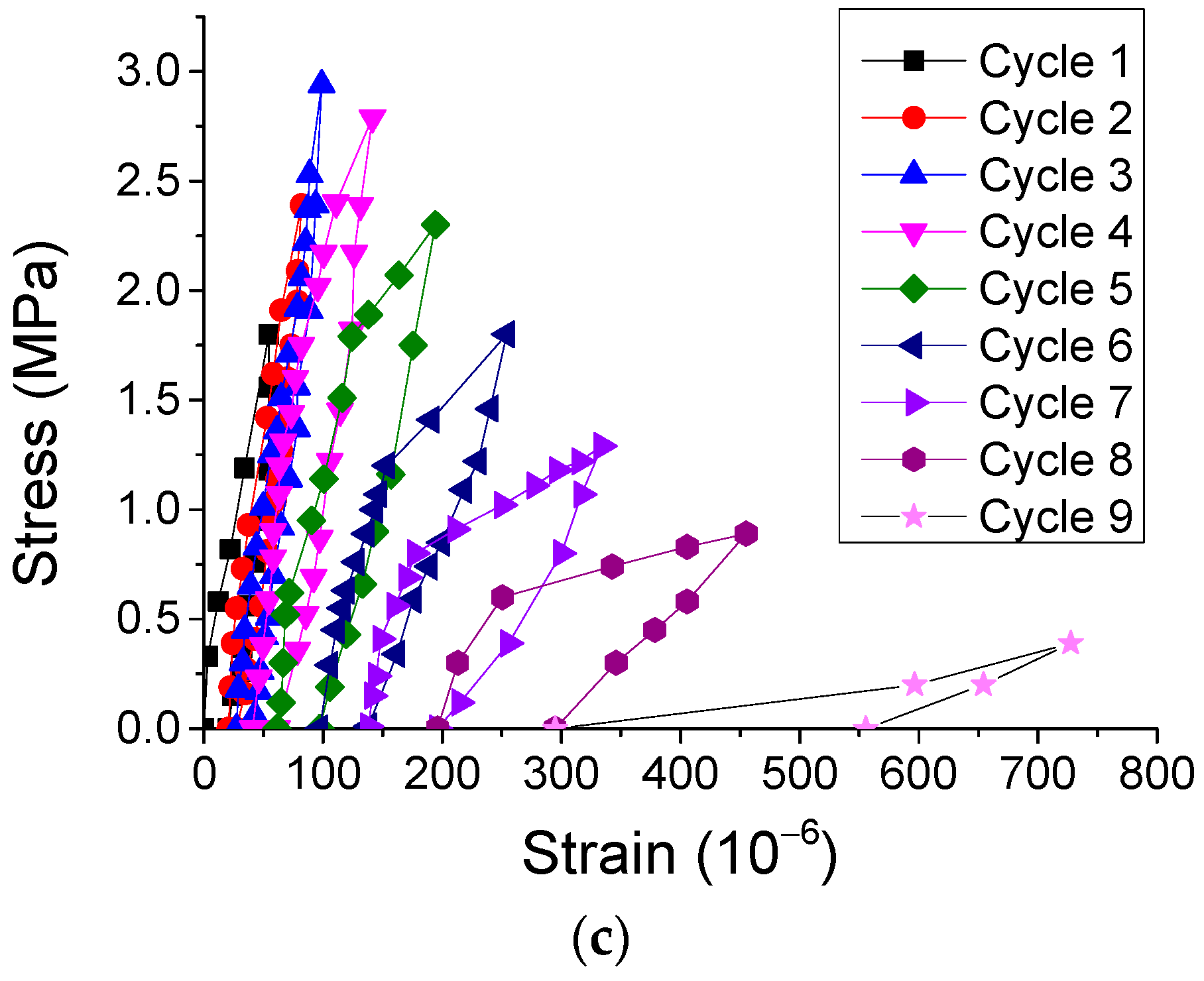
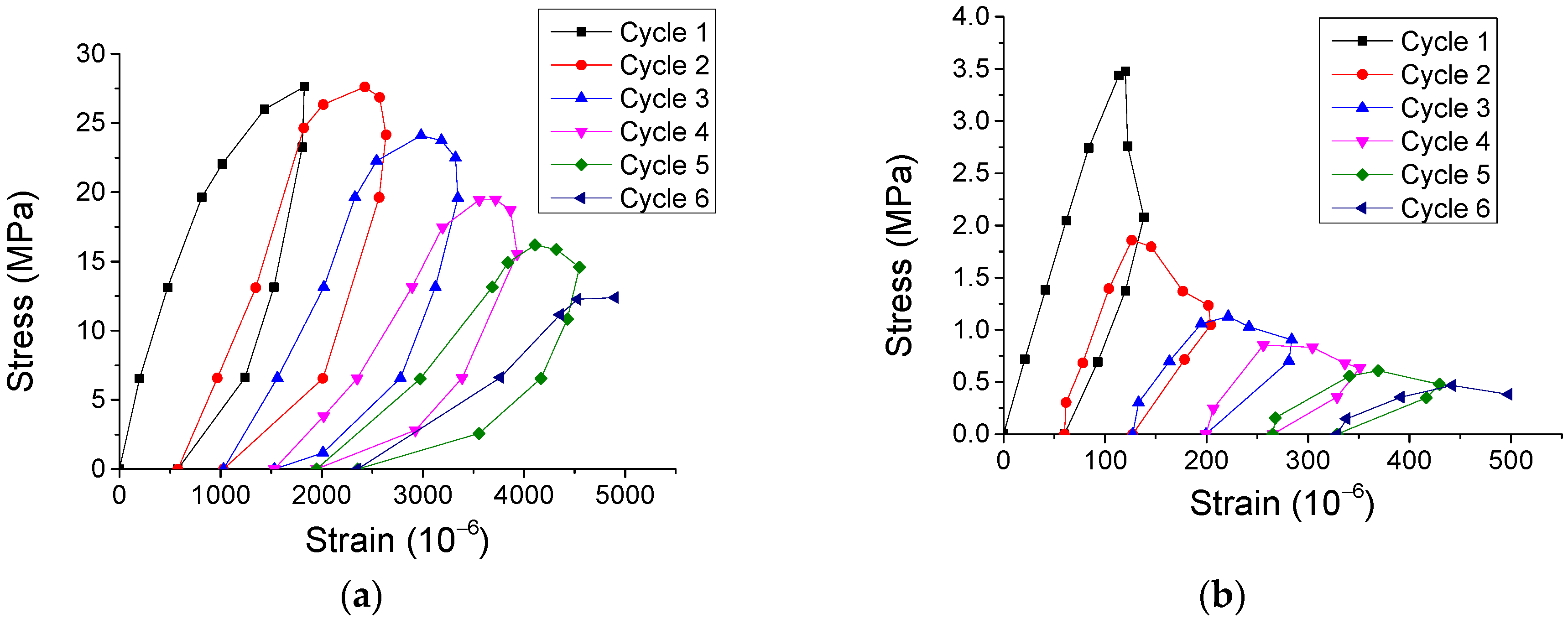
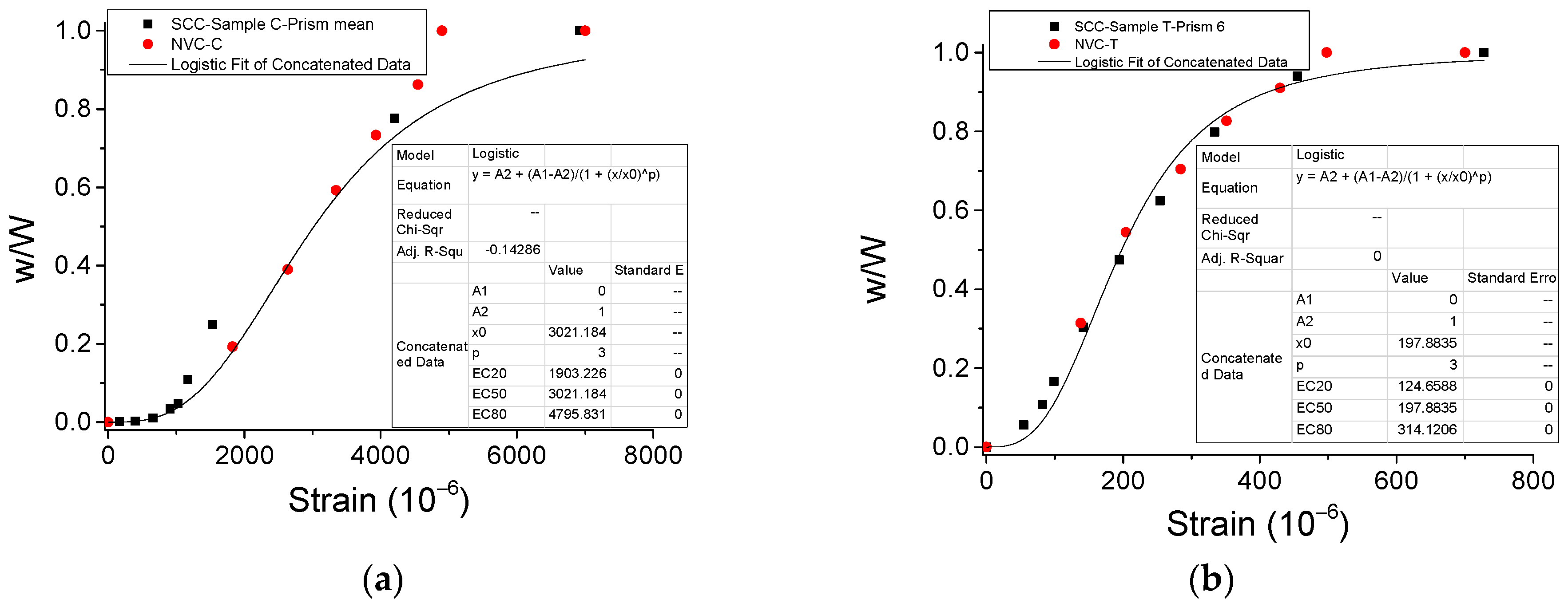
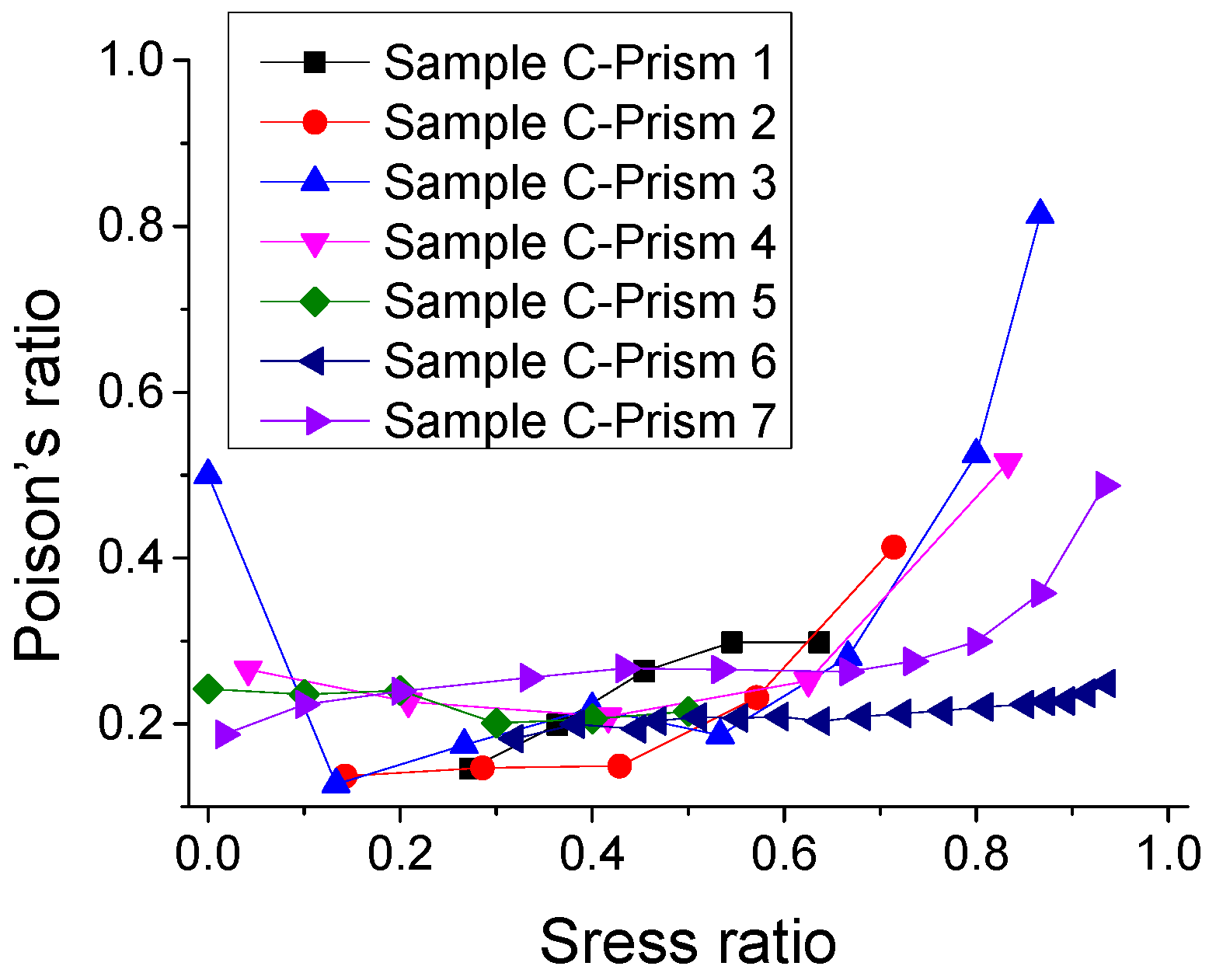
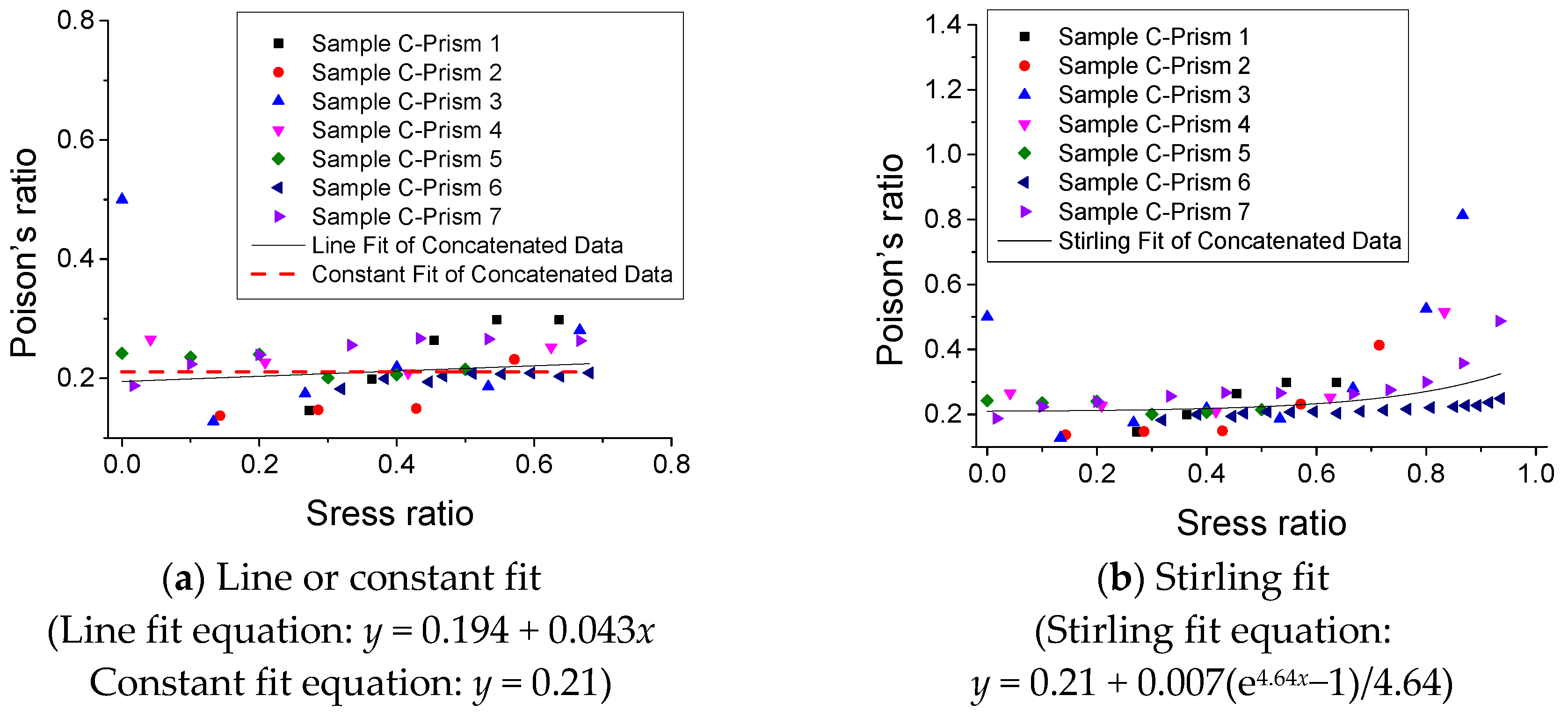
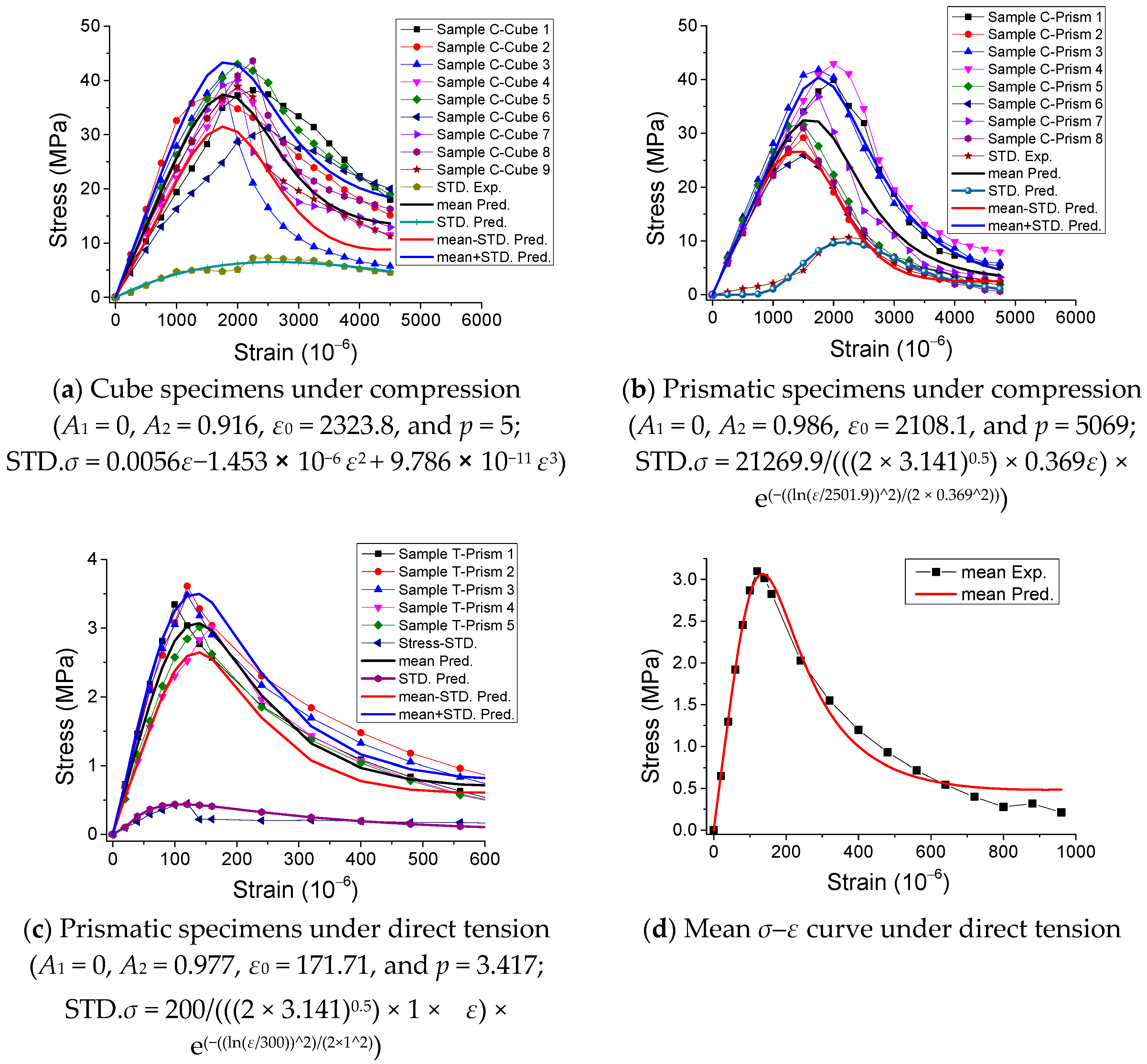
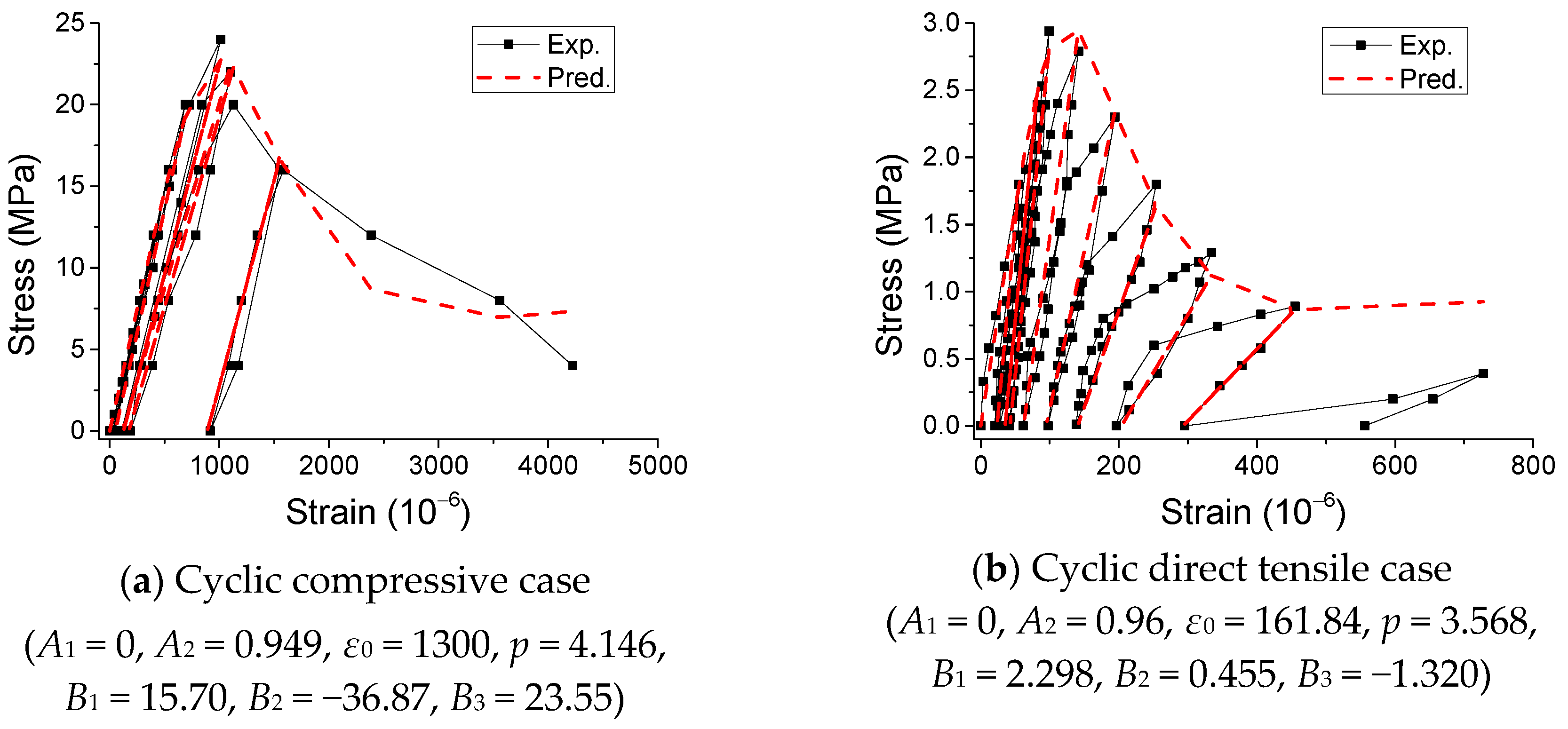
| Test | Slump Flow Sf/mm | Slump Time T50/s | Height of J-ring HJ/mm | Height Ratio of L-box H2/H1 |
|---|---|---|---|---|
| Result | 650 | 4.5 | 15 | 0.9 |
| No. | T-Prism1 | T-Prism2 | T-Prism3 | T-Prism4 | T-Prism5 |
|---|---|---|---|---|---|
| Strength ft | 3.345 | 3.612 | 3.484 | 3.011 | 3.017 |
| No. | C1 | C2 | C3 | C4 | C5 | C6 | C7 | C8 | C9 | C10 | C11 | C12 | C13 |
|---|---|---|---|---|---|---|---|---|---|---|---|---|---|
| Strength fc | 41.81 | 39.6 | 35.46 | 38.4 | 38.93 | 41.52 | 37.54 | 41.47 | 33.29 | 43.46 | 31.24 | 45.92 | 50.59 |
© 2019 by the authors. Licensee MDPI, Basel, Switzerland. This article is an open access article distributed under the terms and conditions of the Creative Commons Attribution (CC BY) license (http://creativecommons.org/licenses/by/4.0/).
Share and Cite
Shan, Z.; Yu, Z.; Chen, F.; Li, X.; Gao, J. Experimental Investigation of Mechanical Behaviors of Self-Compacting Concrete under Cyclic Direct Tension. Materials 2019, 12, 1047. https://doi.org/10.3390/ma12071047
Shan Z, Yu Z, Chen F, Li X, Gao J. Experimental Investigation of Mechanical Behaviors of Self-Compacting Concrete under Cyclic Direct Tension. Materials. 2019; 12(7):1047. https://doi.org/10.3390/ma12071047
Chicago/Turabian StyleShan, Zhi, Zhiwu Yu, Feng Chen, Xiao Li, and Jing Gao. 2019. "Experimental Investigation of Mechanical Behaviors of Self-Compacting Concrete under Cyclic Direct Tension" Materials 12, no. 7: 1047. https://doi.org/10.3390/ma12071047
APA StyleShan, Z., Yu, Z., Chen, F., Li, X., & Gao, J. (2019). Experimental Investigation of Mechanical Behaviors of Self-Compacting Concrete under Cyclic Direct Tension. Materials, 12(7), 1047. https://doi.org/10.3390/ma12071047





